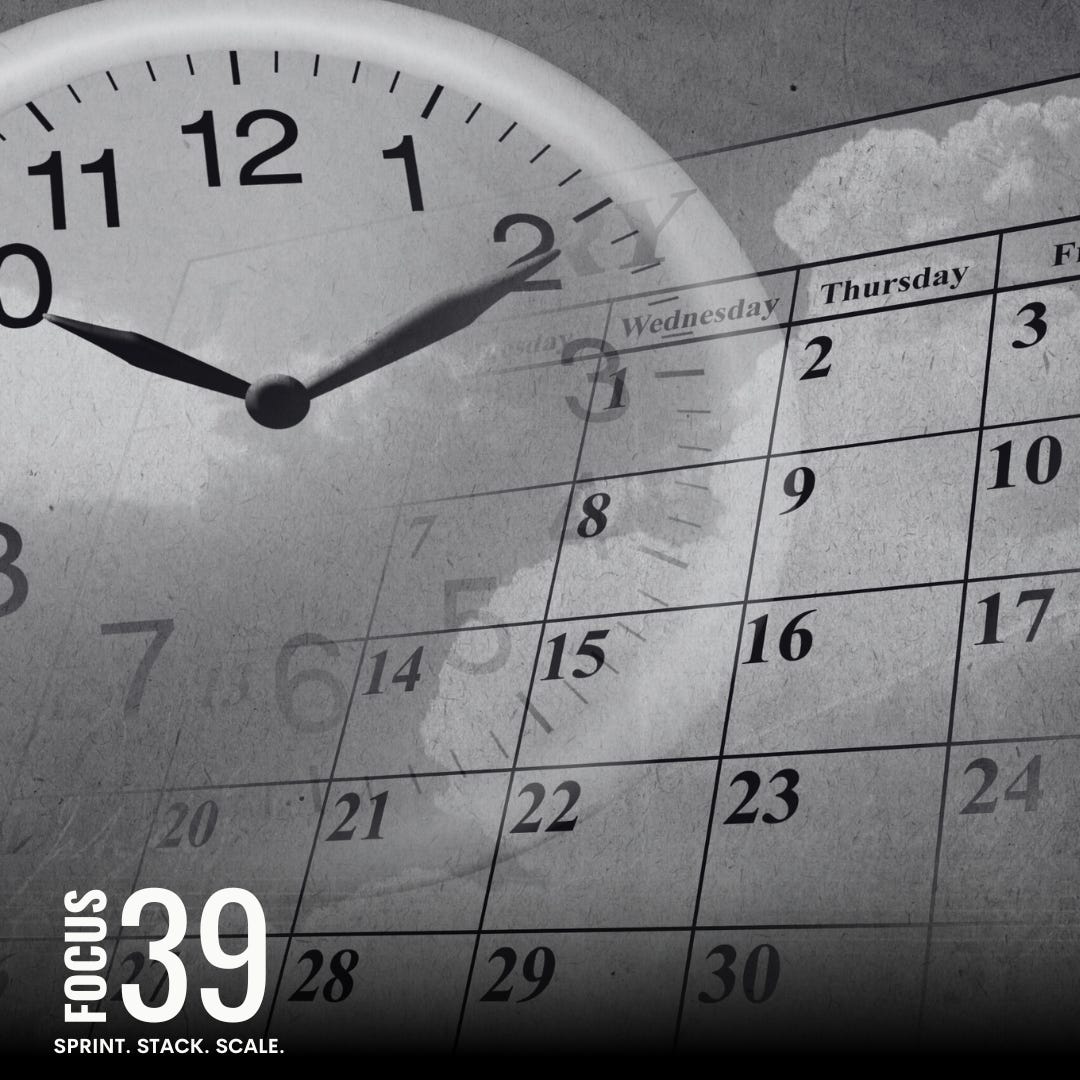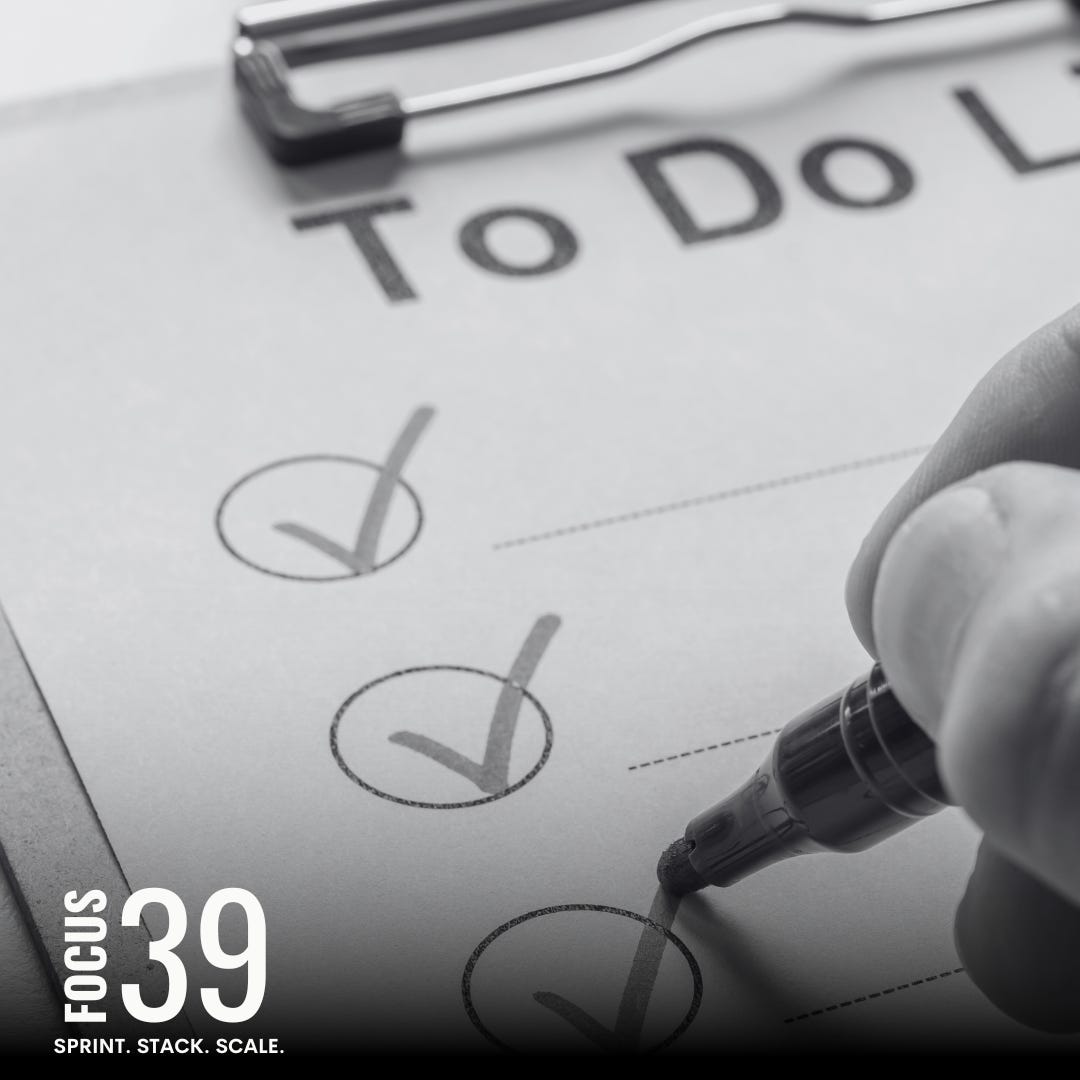5 Proven Strategies to Radically Enhance Your Focus and Boost Productivity
Unlock the power of focus with actionable strategies you can implement today—and sustain for the long term
Maintaining focus has become a superpower. Whether you're trying to finish a project, start a side hustle, or simply get through your to-do list, staying on task can feel like a constant uphill battle.
But here’s the truth: focus isn't something you're either born with or without. It’s a skill—one that you can cultivate and strengthen with the right tools and strategies.
Today, we’re diving into five proven strategies that will help you enhance your focus, cut through distractions, and get more done. These are strategies you can implement immediately, but with practice, they can transform your productivity long term.
1. Eliminate Distractions: Setting the Stage for Success
We live in a world where distractions are a tap or notification away. Whether it’s a ping from your phone or a sudden urge to check social media, these constant interruptions chip away at your ability to focus. The first step to regaining control over your attention is eliminating as many distractions as possible.
How to eliminate distractions:
Audit your environment: Take a moment to evaluate what typically disrupts your focus. Is it your phone? Your workspace? Identify these culprits and make adjustments.
Phone settings to the rescue: Use "Do Not Disturb" mode or apps like Freedom or Forest to block distractions during focus time. The simple act of turning off notifications can do wonders.
Set boundaries with others: Let your family, friends, or coworkers know when you need uninterrupted work time. Whether you work from home or in an office, clearly communicating when you’re in focus mode can help prevent interruptions.
Real-World Example:
When I started writing my book, I struggled to get anything done because my phone was constantly pinging. By turning off all notifications during my designated writing time, I instantly saw a boost in my ability to concentrate. Now, phone-free work sessions are a regular part of my routine.
2. Time-Blocking: The Ultimate Productivity Tool
Time-blocking is a tried-and-true method used by some of the world’s most productive people. Rather than trying to multitask or aimlessly move from one task to the next, time-blocking helps you structure your day into focused work sessions.
How to apply time-blocking:
Create a daily schedule: Allocate specific blocks of time for important tasks. For example, you might reserve 9-11 a.m. for deep work, then 11-11:30 a.m. for emails.
Use digital tools: Tools like Google Calendar, Trello, or Notion are great for time-blocking. You can even color-code tasks based on priority.
Stick to the block: When you’re in a time block, work on nothing else but that one task. If it’s writing, then focus only on writing. Save the other tasks for their designated time.
Pro Tip:
Start with smaller time blocks. If you’re new to time-blocking, try 30-minute sessions and gradually build up to longer ones like 90 minutes.
Real-World Example:
When I first tried time-blocking, I was surprised by how much more productive I became. Tasks that used to take all day suddenly got done in a couple of hours because I wasn’t jumping back and forth between projects.
3. Prioritize Your Tasks: The Power of the "Big 3"
One of the biggest challenges to focus is feeling overwhelmed by a long to-do list. Not knowing where to start or trying to do everything at once often leads to getting nothing done. Enter the "Big 3" method: each day, pick 1-3 high-priority tasks and make those your sole focus.
How to prioritize tasks:
The Big 3 method: Each morning (or the night before), identify the top 3 tasks that will move you closer to your goals. These should be high-impact tasks that make a difference, not just busy work.
Ask the right questions: When choosing tasks, ask yourself, “What will have the biggest positive impact today?” or “What needs to be done today to make tomorrow easier?”
Ignore the rest (for now): It’s tempting to tackle smaller, less important tasks because they’re easier, but this often leads to procrastination. Stick to your Big 3 first.
Real-World Example:
I used to write endless to-do lists, only to get overwhelmed and accomplish very little. But when I started picking my "Big 3" tasks each morning, I found that I was able to knock out the most important things before noon, leaving me feeling productive and accomplished.
4. Take Regular Breaks: Avoiding Burnout and Boosting Focus
Contrary to popular belief, working non-stop doesn’t lead to more productivity. In fact, your brain needs regular breaks to recharge. Without them, your focus and efficiency start to decline. This is where techniques like Pomodoro and active breaks come into play.
How to take productive breaks:
Use the Pomodoro Technique: Work in 25-minute sprints, followed by a 5-minute break. After four sprints, take a longer break of 15-30 minutes. This method is great for maintaining energy and focus throughout the day.
Move your body: During breaks, step away from your desk. Stretch, walk, or even do a few minutes of yoga. Physical movement can refresh your mind and body.
Use breaks for mental reset: If you feel mentally drained, use a break to meditate or practice deep breathing. Even 5 minutes of mindfulness can help you come back with a clearer head.
Real-World Example:
I used to push through work for hours without a break, thinking I was being more productive. But I often ended up exhausted and frustrated. Once I started using the Pomodoro Technique and took scheduled breaks, my energy and focus lasted much longer.
5. Practice Mindfulness: Training Your Brain to Stay Present
Mindfulness is about training your brain to focus on the present moment, rather than getting caught up in distractions or worries about the future. Practicing mindfulness daily can significantly improve your focus, clarity, and ability to stay on task.
How to incorporate mindfulness:
Start your day with 5 minutes of meditation: This can be as simple as sitting quietly and focusing on your breath. There are also apps like Headspace or Calm that guide you through short sessions.
Journaling: Take 5-10 minutes in the morning to write down any distracting thoughts or worries. Getting them out on paper can help free up mental space for focused work.
Mindful breaks: Use your breaks not just for physical rest, but for mental resets. Practice deep breathing or a short visualization exercise.
Real-World Example:
I used to start my day in a rush, immediately jumping into work. But once I added a 5-minute morning meditation routine, I noticed my stress levels dropped, and my ability to stay focused throughout the day improved significantly.
Mastering Focus Is a Journey
Improving your focus is not about making huge, sweeping changes overnight. It’s about consistently applying small, actionable steps like eliminating distractions, time-blocking, and practicing mindfulness. Over time, these strategies compound, creating lasting change in your ability to concentrate and get things done.
Want to take it to the next level?
If you're ready to truly master focus, consider joining Focus 39—a structured program designed to help you develop sustainable focus habits, stack essential skills, and stay accountable within a supportive community.
Focus 39 is your blueprint for tackling big goals and boosting productivity in just 39 days. Let’s get started on your focus journey today!
Ready to transform your focus and productivity?
👉 Join us in Focus 39 and gain the structure, guidance, and accountability you need to make lasting changes. www.focus39.com








